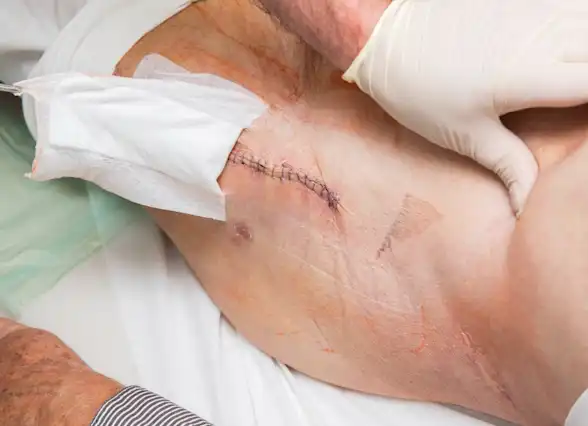Hip Arthroplasty (Replacement) Benefits, Risks, and Complications
Hip arthroplasty (replacement) is common and even referred to as "routine" nowadays, though there are unique risks and complication to know.
Get insurance benefits, legal documents, and medical records in one place

Helpful Highlights
Benefits of hip replacement include pain relief and improved function and mobility.
The risks of a hip replacement are those associated with any major surgery.
Additional risks are that the hip replacement won't bring expected outcomes, and/or may require additional surgeries in the immediate or distant future.
What are the benefits of hip arthroplasty (replacement)?
Hip replacement surgery results are often excellent, provided all recommendations are followed.
Relief from pain is the greatest benefit and the major reason for hip replacement surgery.
Restoring function to the hip joint promotes independence and returns quality of life.
The procedure also offers other benefits, including:
Improved movement and strength
Stabilization of the hip joint and improved coordination of the torso and leg
Reduction in fall risk
The ability to walk, climb stairs, and maintain an active lifestyle in greater comfort
Increased confidence/self-esteem
After recovery, your loved one can engage in various low-impact activities, such as walking, swimming (avoid breaststroke kicks), golfing, or biking. But they should avoid high-impact activities, such as jogging, leg presses, and sports that involve jumping or person-to-person contact. Talk to your loved one's healthcare provider about ways to stay active after hip replacement.
What are the risks of hip arthroplasty (replacement)?
Most people do well with hip replacement, though hip replacement, like any surgery, carries risks. However, the complication rate following joint replacement surgery is very low (less than 2%), and many can be successfully avoided or treated. Chronic illnesses may increase the potential for complications. Although uncommon, when these complications occur, they can prolong healing or limit full recovery.
Bleeding
Infection
Blood clots in the legs or lungs
Difference in leg lengths
Injury to nearby nerves or blood vessels
Fracture
Continued pain, stiffness, or instability of the joint
The implant loosens or wears out and needs revision (another surgery)
Unrelieved joint pain (this may be temporary)
Weakness
Need for additional surgeries or a second replacement
Dislocation (sometimes the ball can separate from the socket, though this happens to less than 2% of patients)
In very rare cases of bone surgery, particularly procedures using bone cement, an embolism (blockage) can occur if fat from the bone marrow enters the bloodstream. A fat embolism raises the risk of a heart attack or stroke.
There may be other risks depending on your loved one's medical conditions. Be sure to discuss any concerns with the surgeon and ask which risks are highest and how to manage them.
RESOURCES
American Academy of Orthopaedic Surgeons (AAOS) – Total Hip Replacement
American Association of Hip & Knee Surgeons (AAHKS) – Total Hip Replacement
Johns Hopkins Medicine – Hip Replacement Surgery
No content in this app, regardless of date, should ever be used as a substitute for direct medical advice from your doctor or other qualified clinician.
Get more support and guidance on insurance benefits, medical records and legal forms.
Helpful brings together your insurance benefits, legal documents, and medical records in one personalized place — so you always know what you have, and never have to search again.

Technology for Health Tasks. Mental Health for the Tough Stuff.
Helpful connects your medical records, insurance, and caregiving tasks automatically. And when you need more than logistics, a therapist is here to guide you.
In-Network and Covered
For Individuals, Couples and Families
HIPAA Compliant, Data Stays Private


Healthcare Tasks Simplified

From syncing records to spotting drug interactions, Helpful does the heavy lifting, turning complex health info into clear tasks and showing you benefits you can actually use, giving you clarity and control over your care.

In-Network Mental Health

Our licensed therapists are here to support you and your loved ones through stress, burnout, and life’s hardest moments, with an inclusive, compassionate approach that works with most insurance plans.

Create Legal Documents

Plan ahead by creating will, trusts, advance directives and more, that ensure your wishes are honored in the event you can’t speak for yourself -with Helpful guiding you every step of the way.